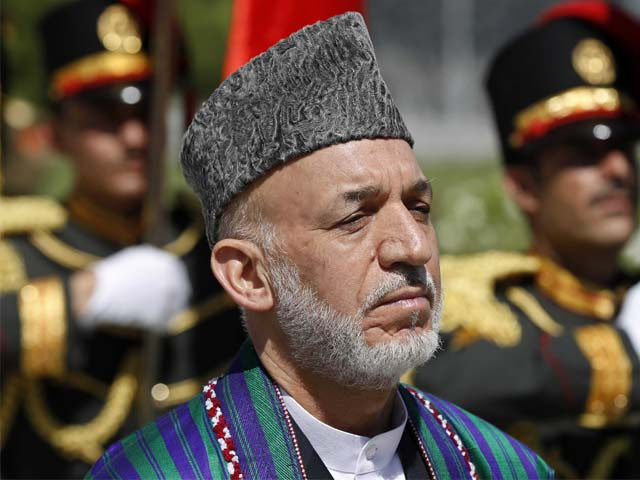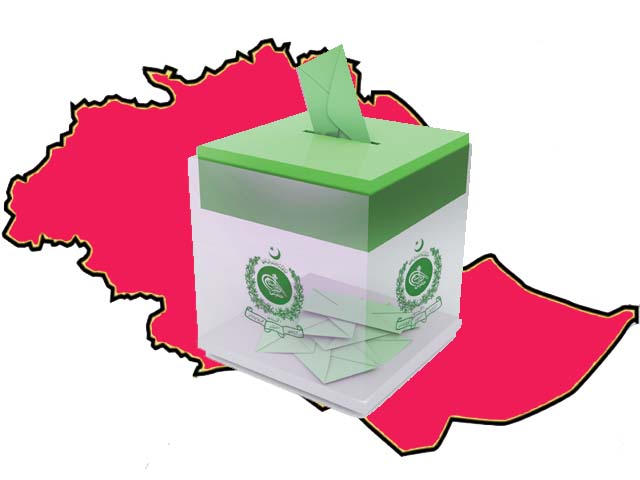
The missteps in the Afghan democratisation process – Part 2
This is the second article in a two part series. Read part one here.
~
II – Absence of Power-Sharing Agreement
Power-sharing is a common tool employed by peace builders in post-conflict societies to end violence among warring groups and pave the way for peace and democracy. Almost half of the power-sharing arrangements work while the other half fail. Afghanistan is a case where it has failed; vindicating Pakistan’s long-held view that leaving a major political force out of power would doom Afghanistan’s peace and democratisation process. Applying the Jarstad’s power-sharing model shows how the crucial features like the inclusion of warring groups, international dependence, and popular support/vertical dilemma were not met. The result of which has been the persistence of the conflict for such a long period. Embedded in the discussion are the recent and on-going efforts to mitigate the negative impact of these actions and the remedies proposed for peace and democracy.
1. Summarising Jarstad and Sisk
Anna K. Jarstad and Timothy Sisk, in their book, “From War to Democracy: Dilemmas of Peace-building,” discuss the dilemmas peace-builders face in ensuring peace and democracy in post-conflict societies. Since both of the objectives are interrelated, simultaneous progress is needed along both dimensions, but the process entails compromises, which results in dilemmas as progress towards one goal harms the other, i.e. progress towards peace may hinder democracy or vice versa. Some of the power-sharing agreement features comprise the inclusion of the warring factions, international dependence, and popular support/vertical legitimacy of warring groups.
Decisions made on these features shape the outcome of the peace process and the consolidation of democracy. Focusing on the exclusion of the Taliban from the peace process, the article highlights how both peace and democracy were doomed from the start because the requirements of the broad inclusion of warring parties, international dependence, and vertical legitimacy were ignored.
2. Assessing Afghan Power-Sharing
Exclusion of parties: Perhaps the most glaring omission from the interim Afghan power-sharing agreement, the Bonn Agreement 2001, was the exclusion of the Taliban from the democratisation process, which hurt the process more than anything else. According to Jarstad, a power-sharing mechanism has four important features, the inclusion of warring parties, intragroup contestation, international dependence, and the levelling of power relations. These features then create dilemmas for peace and democratisation, which are also four in number, horizontal dilemma, the vertical dilemma, the systemic dilemma, and the temporal dilemma. Focusing on just three of these features, including warring factions, international dependence, and intragroup contestation, one can see how Afghanistan’s power-sharing agreement was flawed, and no wonder it did not work.
Without directly discussing the dilemmas for peace and democracy in the meaning of trade-offs, the problems arising out of decisions taken on only three factors of power-sharing mechanism devised by Jarstad are as follows. They concern the initial decision making related to only three features, the inclusion of the warring factions, international dependence and vertical legitimacy issues, and their consequences for peace and democracy in Afghanistan.
Seen in this context, excluding the Taliban from the peace process and the power-sharing agreement violated the requirement of the broad inclusion of all the combatant parties, which resulted in the continuation of the insurgency. Jarstad says, “an agreement that stipulates guaranteed positions only for some warring groups provides a strong incentive for excluded groups to resort to violence, with the purpose of gaining leverage for future negotiations or winning militarily.” However, it is not to suggest that the mere inclusion of such a party will ensure peace, as there have been cases where the agreements with all the warring groups on board also collapsed. But the prospects for peace definitely increase when all the parties are included. Taliban’s exclusion from the peace process led to increasing their resolve to continue fighting. After the initial setbacks, they have been an ascendant power in Afghanistan with large areas under their control. The incompetence and corruption of government in Kabul has further emboldened the Taliban. Jarstad’s prediction that the excluded groups will keep on fighting until they are offered a seat at the negotiating table has been proven right by the recent Taliban-US deal.
i. Systemic dilemma: Contrary to some Afghan calls for engaging the Taliban as the only way forward, the US refusal to engage the Taliban for the first ten years created, what Jarstad calls, a systemic dilemma, whereby international dependence and interference runs against local ownership of the democratisation process. Since the Afghan peace process was a global initiative, the international dependence complicated the peace process. The Karzai-led Afghan government had recognised long before the US that the best way to resolve the Afghan conflict was by including the Taliban in the dialogue process. The US was adamant on refusing the Taliban, a share in the power of Afghan government. This led to a systemic dilemma with adverse effects both for peace and democracy in Afghanistan.
ii. Vertical legitimacy issue: Another cross-cutting matter that complicates peace and democracy revolves around the vertical legitimacy issue. The Taliban are mostly a Pashtun group and have, as such, support among Pashtuns, but it is not easy to ascertain if their appeal is strong enough. Pashtuns are the single largest group consisting of around 40% of the population. The two former presidents of the state, Hamid Karzai and Ashraf Ghani, are Pashtuns but are from Pashtuns who do not support the Taliban. The opposing groups see all Pashtuns as a single entity. They insist on treating them as a single group because treating the Taliban and the other Pashtuns as separate groups result in over-representing the ethnic group in the power structure. Their assertion means that the Taliban should be seen as representative of the Pashtuns, not as a supra-ethnic Islamic movement, which the Taliban claim they are. The Taliban have proven themselves capable on the battlefield, but can they muster enough electoral support for seats in the Afghan parliament? This presents the vertical dilemma of representation and the peculiar issue of whether the Taliban should be considered ethnic Pashtuns or an Islamic movement that transcends ethnic lines. The answer to this question is essential for other stakeholders contesting for power in Afghanistan. Meanwhile, the failure to assess the legitimacy of the Taliban as representative of a significant Afghan population has created a legitimacy crisis. At this point, they are powerful only because of their military might.
iii. Horizontal dilemma: In line with the horizontal dilemma, the exclusion of the Taliban from the process has adversely impacted the prospects for peace, but it has also adversely affected any progress towards democracy. The current democratic order in Afghanistan based on the 2004 constitution is agreed upon only by the Uzbeks, Tajiks, Hazaras and other warring groups but not by the Taliban. The first attempt to remedy this situation was carried out by Hamid Karzai in 2011, when he agreed, “… to support the Taliban’s recognition by the UNSC as a party to the conflict.” Ashraf Ghani, the current President, has also extended a negotiation invitation to the Taliban. There was a brief ceasefire during the Eid-ul-Fitr between the government and the Taliban, which gave some hope for resolving the conflict.
Jarstad’s assertion that failure to include all the warring parties will result in the continuation of conflict, as the excluded groups will keep on fighting for their share in power, is indicated by the persistence of the Afghan Taliban in keeping on the fight. It took peace-builders over ten years to realise that including the Taliban in the power-sharing agreement is vital for peace and democracy in Afghanistan. But the long fight by the Taliban has changed the conflict dynamics too. Militarily, their successes have been impressive, but at the same time, they have expressed the willingness for a political compromise to share power with others instead of aiming for their majoritarian control. It may be fuelled by their realisation that they can never register a complete military victory in Afghanistan in the presence of the US forces. International efforts are underway to convince the Taliban to come to the negotiating table.
iv. International interference/dependence: Too much international intervention/dependence in the peace process has prevented an indigenous and workable solution by creating a systemic dilemma that adversely impacts peace and democracy prospects. The issue of vertical legitimacy also emerges in the case of the Taliban, firstly, as in how much political support they have and secondly as how to accept them; as Pashtuns or an Islamic group? As stated earlier, the non-Pashtuns see them all as a single bloc, while the Taliban consider themselves as a movement transcending ethnic barriers.
The peace agreement of Bonn and its subsequent efforts were heavily influenced by the world community in general and the US in particular. One of the key positions of the international community was denying the Taliban a share in power, which other groups in Afghanistan thought was impractical. The Afghan government under Hamid Karzai realised very early on, the need for inclusion of the Taliban, but their efforts were blocked. According to Jarstad, too much dependence on the international powers results in a lack of local ownership, which means that the fragile peace and democracy may collapse. Another destructive foreign influence in Afghanistan that made democratisation impossible in Afghanistan was the use of the country by India against Pakistan. The Afghan government became a willing partner in the Indian policy of strategic encirclement of Pakistan - a matter of grave danger for Pakistan.
III – The Way Forward
The way forward from here on seems clear by now. The critical point of the foregoing discussion is that acknowledging the material facts in Afghanistan and heeding Pakistani advice would have democratised Afghanistan earlier. The tremendous loss of wealth and human life, and the unspeakable horrors humanity witnessed in this war could have been avoided as early as 2005. It may now be the time to rectify the past mistakes and inform the policy based on evidence and theoretic models. There have been major breakthroughs so far in the negotiations between the US and the Taliban, and the two have signed a peace deal. The second leg of the process has also returned very positive gains with a breakthrough in the first week of December 2020. Prematurely pushing the Taliban for a ceasefire may have blowbacks for all the interested parties.
Drawing on the lessons from the past 19 years of the Afghan war, all the stakeholders in Afghanistan need to be flexible about what is realistically achievable and draw on the theoretical knowledge in the conflict and democracy field. Sensitivity to Pakistani interests is of pivotal importance in the conflict. Disregarding that consideration or strong-arming Pakistan will not help the cause of peace and democratisation but taking note of Jarstad and Snyder’s theory will help bring peace and democratise Afghanistan. At a time when democracies worldwide are under great siege, democratising Afghanistan will be a significant relief for the Afghans and democracy-loving people all over the world.
In the post-war political setup that will follow the on-going negotiations between the US, the Taliban and the Afghan government, it is imperative to guard for issues in the founding elections. International and Afghan stakeholders must first create the favourable conditions for holding the first post-agreement elections. The power-sharing agreement and the permanent constitution must also be informed from the mistakes of 2004 and resolve systemic, horizontal, and vertical legitimacy issues. Making sure a lack of foresight and compromise do not hobble the second chance of democratisation in Afghanistan, hopefully beginning this year, should be the chief aim of the democracy promoters. Pakistan should particularly be pushing for this outcome as no other country’s stakes in Afghanistan’s peace process are higher than Pakistan’s own.




COMMENTS (1)
Comments are moderated and generally will be posted if they are on-topic and not abusive.
For more information, please see our Comments FAQ